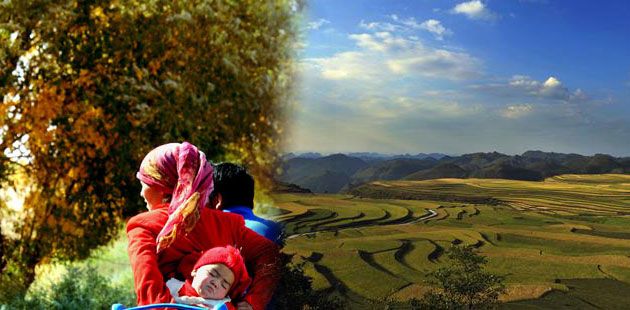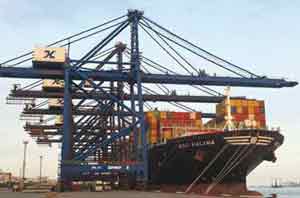Let's ensure all inhabitants are well fed
Updated: 2011-11-04 08:55
By Marcos Fava Neves (China Daily)
|
|||||||||

Over the past week or so much ink has been spent in telling us all about the future of the planet, the scarcity of resources, lifestyles, consumption, the availability of food and land, carbon prices, inflation, water, obesity and a few other things that have made us a lot more sensitive to the fundamental changes taking place around us.
What drove this blanket media coverage was the arrival of person No 7,000,000,000 on the planet. By the time you pick up the next issue of the China Daily European Weekly seven days from now, the world will have more than 1.5 million new mouths to feed.
Just to illustrate, global consumption of wheat is growing (three years average) 10 million tons a year, corn almost 30 million tons a year and soya 20 million tons a year. The consumption of meat grew almost 20 percent in nine years. In essence, we have access to food but production is not responding the way it should. Last year alone we had a deficit of 50 million tons of grain.
Asia is creating a huge middle-class population, with a possibility of almost 1 billion people moving toward being middle class. All forecasts done 10 years ago on production, exports and imports in China were incomplete, and some were plain wrong. In 1995 China produced and consumed 14 million tons of soybeans. Last year it produced 14 million tons and imported 70 million tons, and these figures exceed what was projected for 2030.
If China wants to be self-sufficient in soybeans today, over 35 million new hectares need to be dedicated to the crop. But this is unnecessary, since there are countries and places in the world full of areas to supply food to China.
All this will become even more complicated in the coming years, due to the five-year strategic plan of China that focuses on income distribution and better working wages. So we can expect more income for poor people being reflected immediately in higher food consumption.
It is not only in China that food markets are growing at incredible rates. The food market in India will grow from $155 billion (112 billion euros) in 2010 to $260 billion in 2015. In the same period, Thailand's food market will grow 50 percent and Indonesia's from $65 billion to $100 billion. Imagine what is happening in Middle East and Northern Africa countries, in Africa as a whole and in South America, with the booming economies of Brazil and Argentina representing almost 250 million people.
Food commodity prices rose almost 40 percent last year. This increase is bringing back inflation, hunger and political disturbances in some developing countries where people spend between 30 percent and 50 percent, and sometimes more, of their incomes on food and are net importers of oil.
Two basic questions need to be answered. The first is: Why do commodity prices just rise and the price of industrialized products just fall?
Several factors are putting pressure on food commodities markets, some of which are: the big increase in income and distribution in emerging economies (with no accurate consumption data); urbanization; changing consumption habits; emerging countries' government family income support programs; high oil prices and the use of grains and agricultural land for biofuels; food production shortages (due to climate, unsustainable water use, plagues and diseases, cost increases and other factors); the devaluation of the US dollar and investment funds speculation. Two of these factors need to be looked at more closely.
An increasing number of industries are using farmland more intensively as the main source for their products. Farms (agricultural lands) were originally "designed" for food production and now they are being occupied to produce fuels for our cars, to feed animals (habits are changing to eating more protein), for biofuels, bio-plastics, for paper and pulp, for generating electricity (biomass), for pharmaceuticals, for beauty products (cosmetics), for clothes (cotton), shoes, leather, tires and other rubber products, construction and furniture and several other uses. Since land does not grow, the pressure mounts on existing land and as a consequence land prices increase dramatically.
Another question that arises relates to the increase in cost for producing commodities. Traditional commodity suppliers are facing huge changes in cost structures, prices of land increasing, costs of labor skyrocketing and other costs like water, fertilizers and crop protection. It is a fundamental change.
How can the G20 countries work together to address the food supply and security issues in the coming decades toward 2030? Food chains and governments have two ways of solving the coming problems related to food demand. One is retreating toward an increase in protectionism, stimulating non-competitive areas to produce in an "economically artificial environment" and resuming war-time policies of "self-sufficiency". The other is a production shock, moving toward growth, global trade and inclusion.
Since 2008 I have pointed to 10 solutions to address food supply and security issues for the era of "doing more with less":
1. Expand sustainably and horizontally in food production using new available areas in South America and Africa where water is not scarce;
2. Expand vertically increasing productivity;
3. Reduce food taxes and other market protections and barriers that increase costs and inflate food prices for the final consumers;
4. Invest in global logistics to reduce waste and costs in transporting food;
5. Use the best sources for biofuels production that do not compete with food chains (ethanol from sugar cane is the best example, when compared with corn for feed);
6. Invest in reducing transaction costs that occur in all food chains;
7. Look to a new generation of cheaper and innovative sources of fertilizers (today they represent a high cost to farmers);
8. Ensure there is a sustainable supply of contracts to farmers for more balanced margins allocation;
9. Spread innovations (genetically modified organisms, nanotechnology and others);
10. Change consumer behavior to promote the habit of consuming the appropriate amount (smaller portions) and promote awareness about consuming too much food (obesity).
Giving more emphasis to technology, we will need better land use and management, plant and animal production technology, waste management, diffusion and knowledge transfer, storage and movement infrastructure and creative research and innovation governance architecture.
It is now time to redesign food chains. It needs to be understood that the food system has changed and merged into a much more sophisticated system, taking in commodity companies and consumer companies alike. Food is culture, economic development and a new integrated partnership system. There is a thin line between private companies, public companies and NGOs, and this conversion is making people sit together to avoid conflicts of interest.
Farmers worldwide, but mostly in emerging nations and Africa, need price incentives, technology, credit and buying contracts (market access) in order to invest and grow production to a level that can face increasing food demand in the next 10 to 20 years and solve the food crisis.
If the United Nations, the Food and Agriculture Organization and the G20 are worried about food prices, tax systems need to be debated urgently, even to the extent of giving lower-income people temporary government support, all the while moving as fast as possible toward carrying out the 10 points outlined above.
To produce more food with sustainability, there is a lot to be done, and I trust it can be done. So let's welcome our 7 billionth kid.
The author is professor of strategic planning and food chains at the School of Economics and Business, University of Sao Paulo, Brazil. A complete academic version of this paper can be sent on request (favaneves@gmail.com). The opinions expressed in the article do not necessarily reflect those of China Daily.











